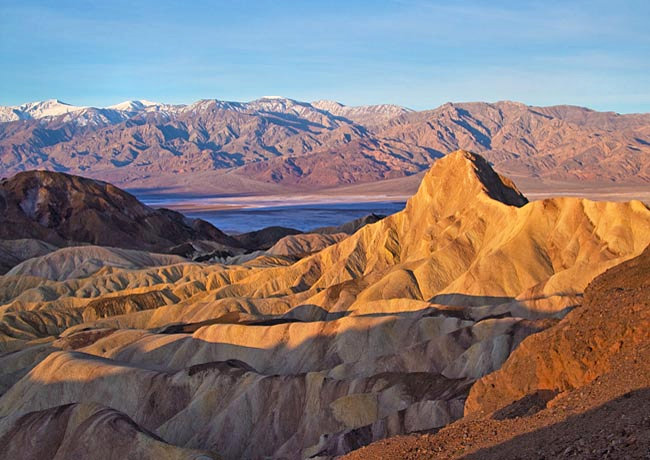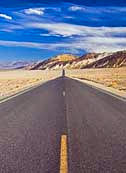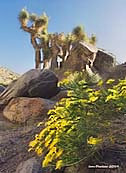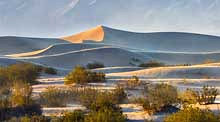|
Scenic USA - California Death Valley National Park |

| Photos by Ian Parker Ian Parker Photography |
The name Death Valley often stirs up an image of a parched prospector, near death, crawling on his hands and knees through the hot desert sand.  Death Valley does have some extreme and inhospitable areas, but the majority of the
national park supports a variety of life. Thousands of plants and animals have adapted in various ways to cope with one of the hottest, driest areas of the Great Basin Desert. In a park filled with surprises, about 600 different plant species call Death Valley home. Plants vary from the brittlebush, found in dry valleys and washes, to the bristlecone pine found at altitudes of 10,000 feet. A land of extremes, Death Valley is the lowest point in the Western Hemisphere. Here nearly 550 square miles lie below sea level and a large portion is covered in a
Death Valley does have some extreme and inhospitable areas, but the majority of the
national park supports a variety of life. Thousands of plants and animals have adapted in various ways to cope with one of the hottest, driest areas of the Great Basin Desert. In a park filled with surprises, about 600 different plant species call Death Valley home. Plants vary from the brittlebush, found in dry valleys and washes, to the bristlecone pine found at altitudes of 10,000 feet. A land of extremes, Death Valley is the lowest point in the Western Hemisphere. Here nearly 550 square miles lie below sea level and a large portion is covered in a  salt pan were visible life does not exist.
salt pan were visible life does not exist.
This California park, a converted national monument, boasts to be the largest national park in the lower forty-nine states, encompassing 3.4 million acres. Despite its harsh and dry conditions, area seeps and springs support a large population of larger mammals. desert bighorn sheep, legendary for their nimble footwork, make their home among the mountains which surround the valley. Other mountain dwellers include cougars, foxes, deer, badgers and coyotes. Birds also make their home in Death Valley, and surprisingly it's a very long checklist. Beginning in the first few weeks in March and lasting through mid-May, northbound waves of migratory birds join residents for a brief stopover in the park. The fall migration gets underway by early August and peaks during the last weeks of September.  This very long north-south running valley acts as a funnel for migrating birds, a birder's paradise during the cooler months of the year.
This very long north-south running valley acts as a funnel for migrating birds, a birder's paradise during the cooler months of the year.
The first visit to Death Valley National Park may change many preconceived ideas about Death Valley, but the park still has its great sand dunes. Another surprise, the park's dunes cover less than one percent of the land area, but are always one of the top items on a visitor's must see list. There are five sections of dunes, with Mesquite Flat Dunes one of the easiest to visit near Stovepipe Wells.
Area Map
Park Map

|
Additional Area Attractions |
|
Copyright © 2023 Benjamin Prepelka
All Rights Reserved
